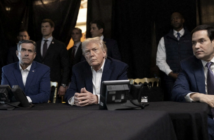Welcome to the CavasShips Podcast with Christopher P. Cavas and Chris Servello…a weekly podcast looking at naval and maritime events and issues of the day – in the US, across the seas and around the world.
This Week…The Chinese Navy is now the world’s largest, with 355 ships. That’s according to the latest edition of the Pentagon’s annual report on Chinese military power – a document full of examples of the much faster-than-expected rise of what the Pentagon calls its number one pacing threat. Will discuss the report with naval analyst Thomas Shugart from the Center for New American Security.
In this Week’s Squawk Chris Cavas discusses failures to communicate.
Please send us feedback by DM’ing @CavsShips or @CSSProvision or you can email chriscavas@gmail.com or cservello@defaeroreport.com .
This Week’s Naval Round Up:
The top three leaders of the submarine USS Connecticut were fired from their jobs November 4 after the commander of the U.S. Seventh Fleet lost confidence in their abilities. The ship’s commanding officer, executive officer and chief of the boat were relieved of their duties. The move came after the Navy on November 1 issued a terse statement that the submarine’s collision on October 2 while submerged in the South China Sea was the result of hitting an uncharted sea mount. The submarine meanwhile remains at Guam undergoing temporary repairs before heading home to Bremerton, Washington and full repairs.
Three U.S. Navy ships are operating in the Black Sea where they’ll take part in a series of exercises. The destroyer PORTER was first in, on October 30, followed by the oiler JOHN LENTHALL on November 3 and Sixth Fleet flagship MOUNT WHITNEY on November 4. At the same time, the Russian Black Sea Fleet was carrying out a series of exercises, including two Kilo-class submarines simulating Kalibr missile launches against what the Tass news agency called “a group of notional enemy warships.”
A strange incident came to light on November 3 when Iranian television put out a story with video of an interaction between the US destroyers THE SULLIVANS and MICHAEL MURPHY with a large number of small, fast Revolutionary Guards fast boats swarming the destroyers and a large Iranian oil tanker. Iran claimed the US was trying to steal the oil; the Pentagon flatly denied the Iranian version of events, calling them bogus and ridiculous. The incident apparently took place October 24 in the Gulf of Oman outside the Persian Gulf. Analysis by the group Tanker Trackers.com seemed to confirm the US version of events and speculated the incident was staged by Iran to embarrass the US.
Construction of China’s big Type 003 aircraft carrier continues at a rapid pace at a shipyard near Shanghai. The ship’s island superstructure was landed by crane around November 3, and it appears the carrier will be launched during 2022.
The German frigate BAYERN arrived in Tokyo Bay November 4, a major stop in the ship’s six-month deployment to the Western Pacific. The visit to Tokyo, which began November 5, is the first German naval visit to Japan since about 2001.
CAVAS SQUAWK — The Pentagon’s annual report on Chinese military power is one of the key documents spelling out specific challenges from what US military leaders routinely call their number one pacing threat. Theoretically, it is meant to give busy lawmakers and policy makers a solid understanding of the challenge China’s rise presents to the United States. The report is chock full of stark statements and numbers and addresses more than a dozen topic areas. Nominally it should be a key element in Capitol Hill’s understanding of the situation.
The problem is, it’s simply not a very presentable or readable report. In grey page after grey page, there is no sense of presentation to grab the eye. The intended audience — everyone in Congress — is frantically busy, with any number of issues demanding their attention. Dozens of reports are issued every week – and most of them go largely unread. The trick is to make your report stand out, to convey information without demanding someone sit down and actually read 192 pages.
Once upon a time the Pentagon knew how to do this – very well. In the early 1980s a slick, lavishly-illustrated publication replete with easy-to-understand graphics and charts was produced to underpin the Reagan administration’s huge military buildup. Titled Soviet Military Power, the magazine-style report wasn’t slim – – usually around 140 to 150 pages – but it was easy to read. Anyone flipping through the report for about ten minutes could come away with a pretty good understanding of the scope and breadth of the Soviet military threat, at least according to the Pentagon. It was a well-produced, outstanding piece of propaganda, and it worked. Those annual Soviet Military Power reports did a lot to convince lawmakers of both parties to support the buildup, which led directly to the fall of the Soviet Union.
I don’t know if the Chinese threat is the same as that of the old USSR, but I do know the folks who put together this report on Chinese military power can do a vastly better job. The way it is now, it looks like something someone takes a look at, says I’ll read it later when I have time, and then never does.
That simply is not going to get it done.




